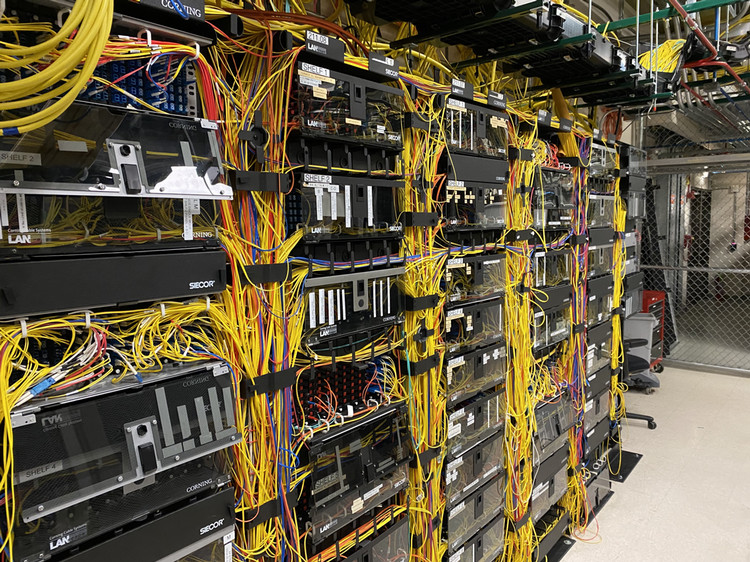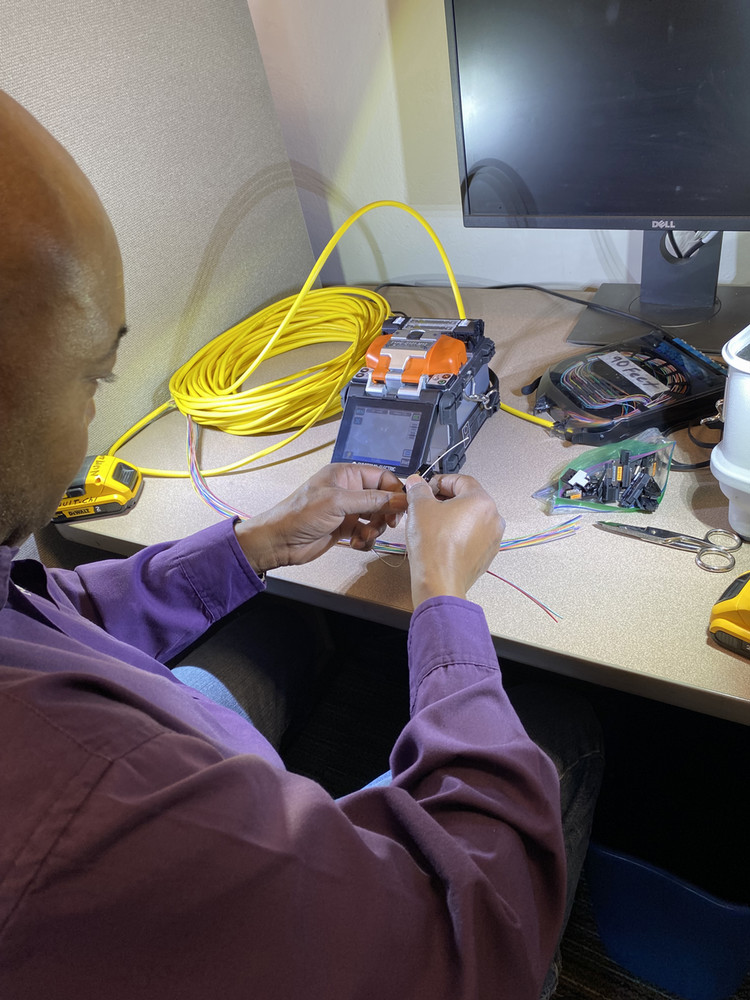Colleague Connection: Guardians of Connectivity

Just below the surface of Northwestern's campuses lies a labyrinth of fiber optic and copper cables that silently orchestrate the digital life on campus. Above are thousands of distributed wireless access points and switches silently relaying messages from location to location. Meet Telecommunications and Network Services (TNS)—the guardians of connectivity—whose expertise and dedication ensure that students, faculty, and staff can seamlessly access online resources and communicate across virtual environments.
We sat down with Julian Koh, director of TNS, to learn more about his teams and their role in keeping the campus connected.
What services does TNS support?
Telecommunications and Network Services is the division of Northwestern IT responsible for all the University's voice, video, and data networking (except for the Qatar campus). This includes taking care of the design, operations, support, installation, and reinstallation of everything related to our internet and other off-campus data connections, as well as the campus wired and wireless data network. It also includes telephone services, on-campus phones, and off-campus local, long-distance, and international carrier connections.
We also run the campus two-way radio system and systems that augment cellular networking, and we help facilitate the delivery of video services, like cable and satellite TV, to student residences, offices, and other common gathering areas on campus.
We work to meet the community's expectation that the network performs like a utility like water or electricity—you just expect it to be there.”
Director of Telecommunications and Network Services
Northwestern Information Technology
Who are the teams, and what are their specific roles?
In addition to our project managers, there are three main groups within TNS.
The primary customer-facing arm of TNS is the Field Operations team, led by Doug Dickerson. This team is responsible for physical work related to running the entire infrastructure and is always on campus. On our two main campuses, there are approximately 250 buildings that we have services in. Within these buildings are about 350 closet locations where our equipment is housed. They also maintain fiber optic and copper cabling pathways within and between those buildings. Even in a world where people primarily have wireless connectivity, all the wireless stuff needs to connect to a wired connection at some point.
This team also fulfills orders for ethernet jacks, distributes access points and telephones, and performs onsite troubleshooting for those connections.
Our Data Network Engineering team, led by Chris Fabri, supports everything related to the internet protocol (IP) network. They are responsible for configuration, engineering, and troubleshooting issues with routers, switches, access points, controllers, load balancers, optical network gear, and authentication servers. Also, TNS delegates to departments and groups the ability to do their DNS and DHCP registrations, get port information through the NUSA system, and receive notifications when ports are turned off or advised when ports are quarantined.
Similarly, reporting to me, our telecommunications engineers are focused on the voice and telephone systems—Cisco phones, E-911 calling, voicemail, connections for police consoles, and emergency phone circuits. All in all, there are roughly 14,000 different phone lines on campus and about 9,000 voice mailboxes.
What are the challenges in their daily work?

network cables
The unique characteristics of some of our responsibilities are that we have all this physical infrastructure spread out across the entire campus, compared to the University Data Center, where equipment is concentrated in one area. When we think about things like redundancy and resiliency, we need to consider items all the way down to the physical layer; for example, ensuring there are multiple diverse entry points into critical sites in case something cuts one of the fibers that go into a major building.
We aim to design the network so that any single point of failure does not have a significant impact on overall services. Fiber cuts happen regularly – it's a testament to our network's resiliency and the design of our network that service isn't interrupted for the vast majority of these events.
For a long time, the network has been the central infrastructure on which everything depends in running IT applications and services. We work to meet the community's expectation that the network performs like a utility like water or electricity—you just expect it to be there.
What is your favorite place on campus?
It's tough to say. I've been on the Evanston campus since I was 13, attending the Center for Talent Development camps. I enjoy taking walks on campus whenever I can; it's interesting to see how the campus has changed over the decades. The Lakefill is certainly on my list, as is the Technological Institute, where I spent most of my time as a student.